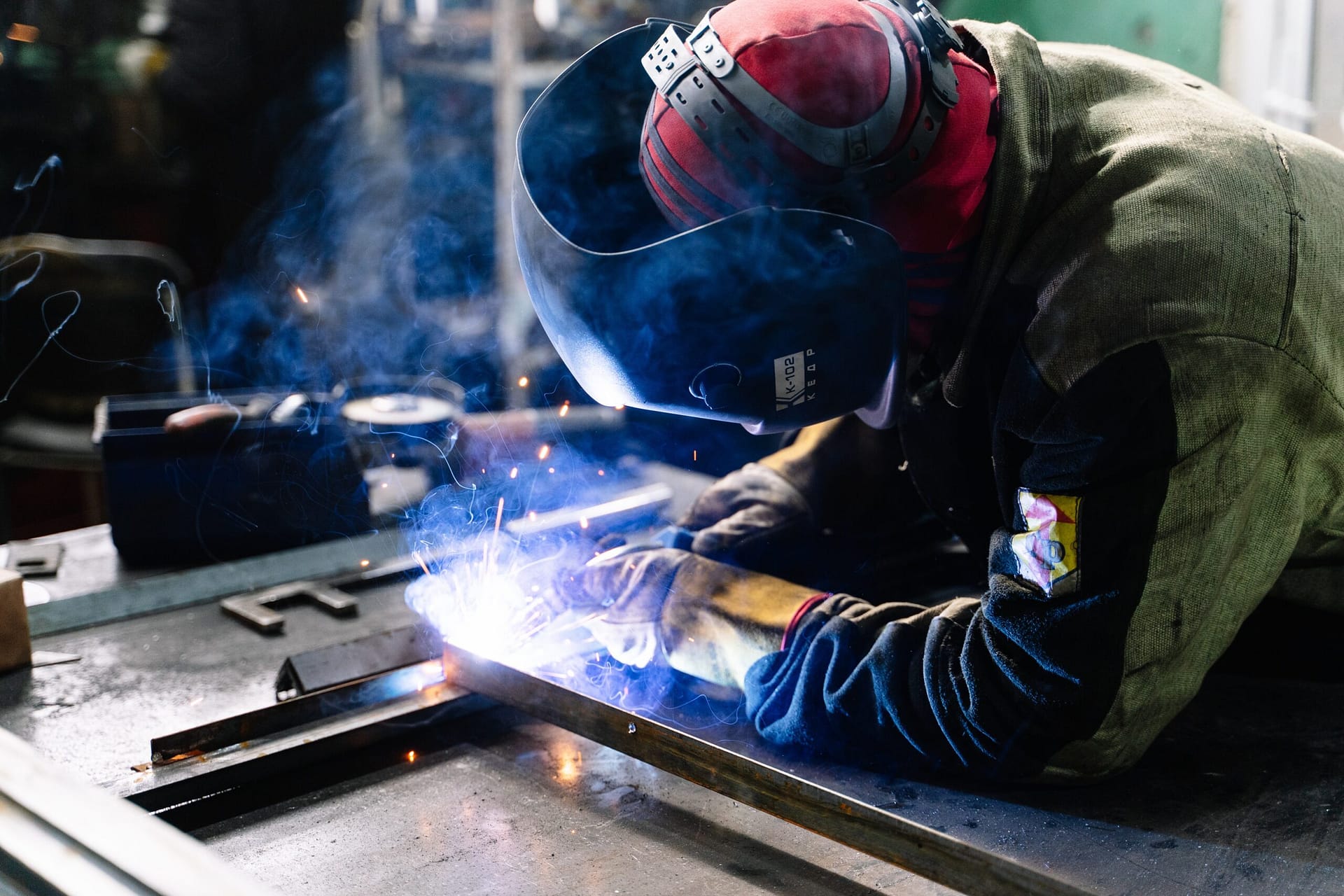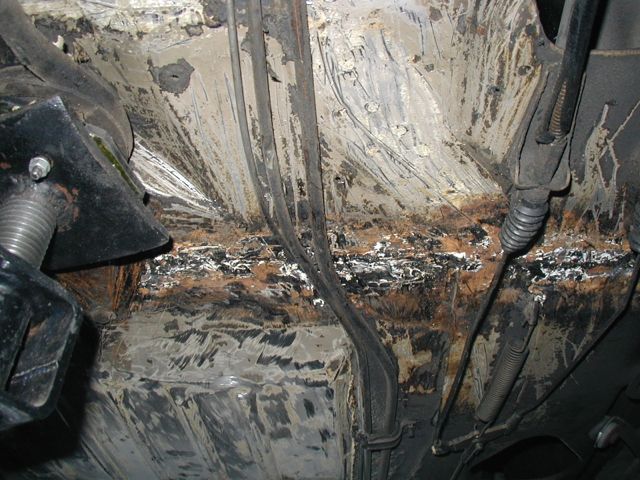Typical Welding Repair Issues and How to Address Them Effectively
Welding repair services typically come across a series of issues that can threaten the honesty of the end product. Usual problems consist of insufficient infiltration, porosity, and imbalance, among others. Each flaw presents one-of-a-kind obstacles that need details strategies for resolution. Recognizing these issues is vital for welders aiming to improve their skills and results. This conversation will explore these common welding fixing issues and reliable approaches to address them.
Insufficient Penetration
Poor infiltration occurs when the weld metal stops working to totally fuse with the base material, leading to weak joints and possible structural failings. This concern commonly comes from not enough warmth input, wrong electrode angle, or improper welding speed. Welders may experience inadequate penetration as a result of a mistake of the necessary parameters for a details material density or type. Additionally, contamination on the base material's surface area can prevent efficient bonding, exacerbating the issue. To resolve poor penetration, welders ought to assure suitable settings on their tools and keep a clean job surface area. Normal inspection of welds is recommended to identify any type of shortages early, allowing for timely improvements and the avoidance of jeopardized structural stability in welded settings up.
Porosity
Porosity is an usual flaw in welded joints that materializes as small gas bubbles entraped within the weld steel. This problem can endanger the integrity of the weld, leading to lowered strength and prospective failing under tension. Belgrade Welding. Porosity normally occurs from contamination, moisture, or improper welding methods, which enable gases to escape into the molten weld pool. To deal with porosity, welders should ensure appropriate surface prep work, keep a clean workplace, and use appropriate welding criteria. In addition, choosing the appropriate filler product and securing gas can mitigate gas entrapment. Routine assessment and testing of welds can assist identify porosity early, ensuring timely rehabilitative actions are taken, thus preserving the high quality and reliability of the welded structure
Misalignment
Misalignment in welding can occur from different elements, including improper configuration and thermal expansion. Understanding the origin is crucial for efficient resolution. Numerous adjustment techniques are readily available to realign elements and guarantee architectural integrity.
Root causes of Misalignment
Welding imbalance typically originates from a range of underlying problems that can jeopardize architectural stability. One key cause is improper fit-up of parts prior to welding, which can cause voids and irregular surfaces. Variants in thermal expansion throughout the welding process can likewise cause distortion, especially if the products being joined have various coefficients of growth. Furthermore, poor fixturing and clamping might fail to hold components securely in position, bring about motion during welding. Poorly conserved devices, consisting of welding makers and devices, might introduce inconsistencies in the weld bead, more contributing to imbalance. Driver error, stemming from inadequate training or experience, can also play a considerable role in creating misaligned welds.

Adjustment Strategies Offered
Attending to imbalance efficiently calls for a mix of corrective techniques tailored to the particular concerns available. One common technique is making use of components or jigs to hold components in the proper setting during welding, guaranteeing constant positioning. In addition, preheating the products can assist decrease distortion and improve fit-up. For significant misalignment, mechanical realignment methods, such as using hydraulic jacks or clamps, can be utilized to fix the position before welding. Post-weld warm therapy may additionally be necessary to eliminate tensions triggered by imbalance. Lastly, mindful assessment and adjustment throughout the configuration phase can avoid imbalance concerns from becoming substantial problems, advertising a smoother welding procedure and improving total architectural honesty.
Distortion
Distortion is an usual obstacle in welding that can emerge from numerous factors, including uneven heating & cooling. Understanding the sources of distortion is important for executing effective avoidance strategies. Resolving this issue not only boosts structural stability however also boosts the total top quality of the weld.
Causes of Distortion
When based on the extreme warm of welding, products usually undergo modifications that can lead to distortion. This sensation mainly arises from thermal expansion and contraction during the welding process. As the weld location warms up, the material broadens; upon cooling, it acquires, which can produce interior tensions. Furthermore, irregular heating throughout a workpiece can intensify these anxieties, resulting in bending or flexing. The type of product likewise plays a substantial role; metals with varying thermal conductivity and coefficients of development might react differently, bring about uncertain distortions. Bad joint style and poor fixturing can add to misalignment during welding, increasing the probability of distortion. Understanding these causes is important for effective welding repair and avoidance strategies.
Prevention Techniques
Reliable avoidance methods for distortion throughout welding focus on regulating heat input and ensuring appropriate joint layout. Maintaining a constant warmth input helps to lessen thermal growth and tightening, which can bring about distortion. Using strategies such as pre-heating the work surface can likewise minimize the temperature slope, promoting uniform home heating. In addition, choosing proper joint styles, such as T-joints or lap joints, can enhance stability and minimize stress and anxiety focus. Implementing appropriate fixturing to safeguard the work surfaces in place even more aids in keeping positioning throughout the welding process. Ultimately, staggered welding series can distribute warm more uniformly, protecting against localized distortion. By applying these techniques, welders can considerably lower the likelihood of distortion and enhance the overall top quality of their welds.
Cracking
Splitting is an usual issue encountered in welding repair services, frequently find out this here resulting from different variables such as incorrect air conditioning prices, product option, or inadequate joint prep work. The occurrence of fractures can significantly compromise the integrity of the weld, bring about possible failures throughout procedure. To resolve this issue, welders need to initially assess the source, guaranteeing that products are compatible and properly picked for the particular application. In addition, controlling the air conditioning rate during the welding procedure is crucial; quick air conditioning can cause stress and anxiety and bring about cracking. Appropriate joint layout and prep work also add to lessening the risk. Applying these approaches can boost weld top quality and resilience, eventually reducing the chance of fracturing in ended up weldments.

Incomplete Fusion
A significant issue in welding fixings is insufficient combination, which happens when the weld steel does not sufficiently bond with the base material or previous weld passes - Montana Mobile Welding and Repair Fabrication. This flaw can lead to weak points in the joint, potentially compromising the honesty of the bonded structure. Aspects contributing to incomplete combination include not enough warm input, improper welding strategy, and contamination of the surfaces being signed up with. To address this issue successfully, welders ought to assure proper pre-weld cleansing and surface area preparation, in addition to change their welding parameters to achieve appropriate infiltration and fusion. Normal assessment throughout the welding process can also help recognize insufficient combination early, enabling prompt corrective procedures to enhance the overall top quality of the weld
Overheating
While welding repair services can boost architectural honesty, overheating provides a considerable challenge that can bring about material deterioration. Too much heat throughout welding can alter the mechanical properties of metals, leading to minimized stamina, enhanced brittleness, and warping. This phenomenon is specifically essential in high-stress applications where structural integrity is paramount. Recognizing getting too hot can entail aesthetic examinations for discoloration or distortion, along with checking temperature during the welding process. To reduce the dangers connected with getting too hot, welders should employ proper techniques, such as controlling warm input, changing travel rate, and making use of ideal filler products. Additionally, implementing pre- and Full Article post-weld heat treatments can assist restore product residential properties and boost the general quality of the repair work, ensuring long-lasting performance and security.
Frequently Asked Questions
What Are the Common Indicators of a Welding Defect?

Exactly How Can I Test My Welds for High quality?
To examine welds for quality, one can utilize aesthetic assessments, ultrasonic testing, and radiographic methods. Each strategy assures architectural integrity, determines issues, and validates adherence to specified requirements, ultimately improving the integrity of the welded joints.
What Security Safety Measures Should I Take While Welding?
When welding, one ought to prioritize security by wearing suitable individual protective devices, guaranteeing proper air flow, protecting combustible materials away, maintaining a clean workspace, and understanding surroundings to avoid injuries and accidents.
Can I Fix a Weld Without Renovating the Entire Joint?
Fixing a weld without redoing the whole joint is feasible, depending upon the damages (Belgrade Fabrication). Methods such as grinding, adding filler product, or utilizing a welding procedure can effectively address specific problems while maintaining the bordering structure
What Tools Are Important for Efficient Welding Repairs?
Crucial tools for effective welding repair work consist of a welding device, wire brush, grinder, safety gear, clamps, and filler products. Each tool plays a crucial role in making certain high quality and safety and security throughout the fixing process. Porosity usually emerges from contamination, see this website dampness, or improper welding strategies, which permit gases to get away into the molten weld swimming pool. Poorly maintained equipment, consisting of welding devices and tools, might present disparities in the weld bead, more contributing to misalignment. When subjected to the extreme heat of welding, products usually undertake changes that can lead to distortion. Splitting is a common concern experienced in welding fixings, commonly resulting from various elements such as improper cooling prices, product choice, or inadequate joint prep work. A considerable concern in welding repairs is insufficient fusion, which happens when the weld steel does not sufficiently bond with the base product or previous weld passes.